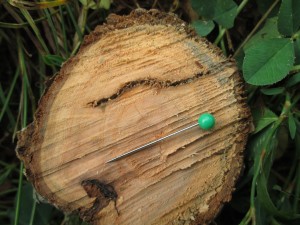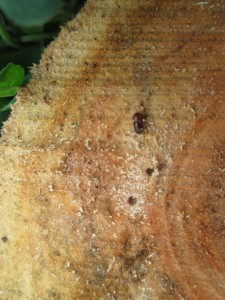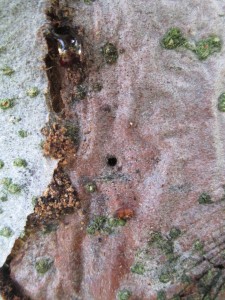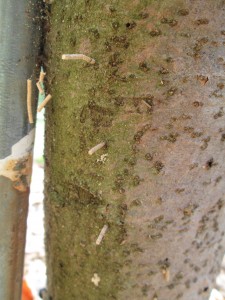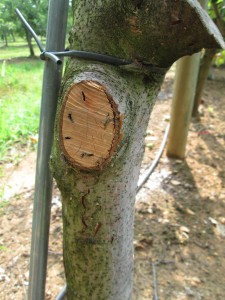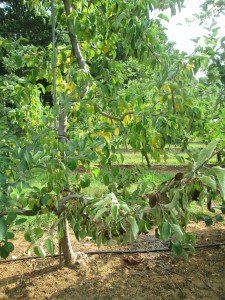A farm in Southern NJ is experiencing an infestation of the granulate ambrosia beetle, Xylosandrus crassiusculus (Mot.). GAB was identified by expert Dr. James Lashomb at Rutgers. Adults are hunch-backed in appearance and are cinnamon or brownish in color. Females are 2.1-2.9mm in length and males are 1.5mm. Offspring are small white and legless c-shaped larvae.
Females bore into trunks or limbs and excavate a system of tunnels in the wood. The beetles feed on living trees and carry a mutualistic fungus with them. When GAB females attack a tree, they introduce the fungus, which also is used as a food source. Eggs, larvae, and pupae are found together in galleries. There are related ambrosia beetles that attack apple and are present in other states and it is possible we have multiple species.
Hosts:
This species attacks ornamental trees including those found in natural landscapes and hedges such as dogwood, flowering cherry and locust. An earlier Plant & Pest Advisory article by Richard Buckley documents GAB in ornamentals. This year we have documented infestations in apple and peach at one NJ orchard.
Damage:
This small bark beetle creates round 2mm entrance holes. Granulate ambrosia beetles usually mass attack trees and numerous exit holes can be observed. Damage usually occurs on the main stem close to the ground, but can be found through out the tree in heavy infestations. Trees of 3 inch DBH or less are more readily infested than larger trees, but large host can be attacked. Dave Schmitt and I observed exit holes on the trunk as well as scaffold limbs in apple.
Trees with high levels of resin, like peaches, can have gummosis at multiple sites. As the beetles feed they push out sawdust frass out of the gallery and which form “toothpicks”. These toothpicks are a very good indication of GAB activity, however, they are fragile and breakoff in rain or wind. In NJ apple and peach, we have observed frass spikes in late July and again in early-mid November. They will likely be present in mid-Spring during the first flight period.
Heavy infestations usually lead to wilting, dieback and eventual tree death. Current management recommendations are Lorsban spray in the spring. Severely infested trees must be cut down and burned.
Monitoring:
We believe GAB has 3-4 generations per year in the southern parts of the state. GAB is likely moving from the hedgerow and attacking stressed or otherwise injured trees. Current monitoring is a visual examination of the trunk and limbs for exit holes and toothpicks. If suspected populations are present the limb needs to but cut in order to identify galleries and the presence of the beetle. All life stages are present in a single gallery.
What to do:
Currently, we are trying to identify if this is an isolated infestation or is present in multiple NJ orchards. If you are a NJ tree fruit grower and have observed “toothpicks” and numerous exit holes with tree decline, please talk with Dave Schmitt or myself. We intend to establish a monitoring program in the spring and hope to conduct management evaluations.
